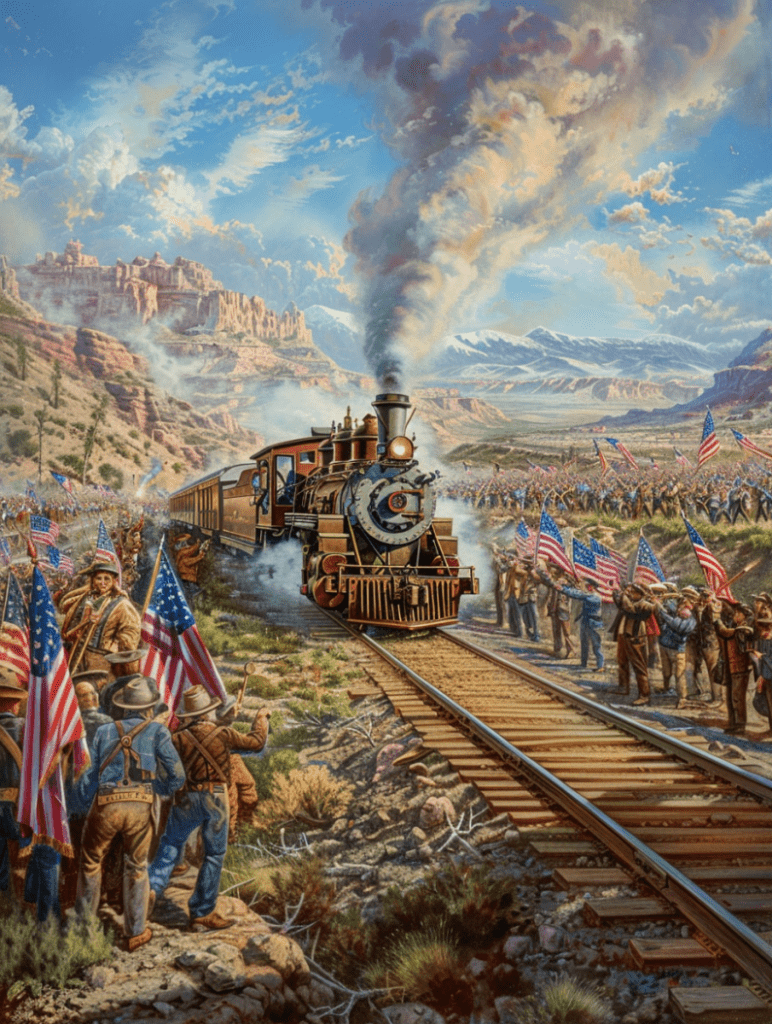On This Day May 10, 1869 a momentous occasion unfolded in the remote town of Promontory, Utah, as the presidents of the Union Pacific and Central Pacific railroads came together to witness the realization of a dream – the completion of the first transcontinental railroad.
For years, the idea of a coast-to-coast rail line had been the subject of ambitious plans and heated debates, but on this day, the final golden spike was driven into the ground, symbolically uniting the two railway companies and ushering in a new era of transportation and progress.
Amidst the cheers of laborers and dignitaries alike, Union Pacific’s Thomas C. Durant and Central Pacific’s Leland Stanford took turns striking the ceremonial spike, marking the culmination of an incredible feat of engineering and human perseverance. The completion of the transcontinental railroad was not just a technological marvel but a testament to the resilience of the thousands of workers who had toiled tirelessly.
The impact of this achievement was profound, revolutionizing the movement of goods, people, and ideas across the vast expanse of the United States. The transcontinental railroad became a symbol of American ingenuity, perseverance, and the indomitable spirit that would continue to shape the country’s destiny for generations to come.
